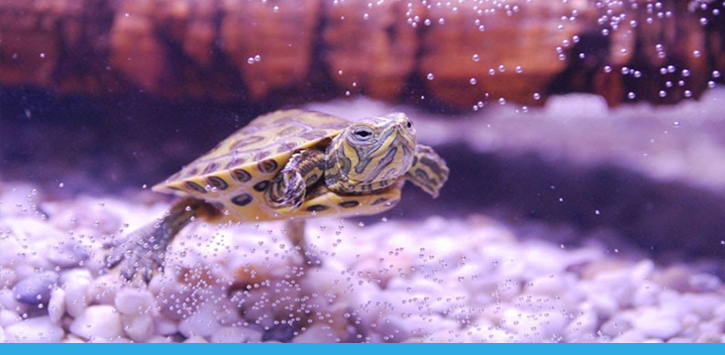This article was written by Stephenie Taylor, Mia Fagan, and Cecilia Khan.
How do turtles hibernate? If you want to find out, you are in the right place. We will bring you on a virtual tour through the hibernation process of turtles. Grab your popcorn and enjoy learning about something new!
Turtles breathe in three different ways, depending on the situation.
- One of the ways that turtles can breathe is by using their lungs. Turtles have to use this breathing method when on land.
- Turtles can use their mouth and throat to breathe as well. They can collect water into their mouth and throat and then get oxygen from it. This process isn’t used a lot, but if a turtle is struggling to breathe, it can be used.
- The last method is using the cloacal (clo-oc-ol) or butt. For turtles that hibernate in cold water this is how they get most of their oxygen.
The Hibernation Process
When turtles hibernate they survive off of stored energy and the oxygen in water. A turtle’s body temperature determines the rate of their metabolism. So when their body temperature goes down, so does their metabolism. When their metabolism drops and their heart and respiration rate go down, they don’t require as much energy and oxygen to survive.
Brumation is similar to hibernation. The only difference is that reptiles brumate and mammals hibernate. While turtles are brumating they don’t need a lot of oxygen, but they do need cloacal respiration. Cloacal respiration is when they move the water over the blood vessels on their bodies. Their cloaca – essentially their butt – has a lot of blood vessels so that is the most efficient way to get oxygen.
Turtles are “ectotherms,” which mean they are cold-blooded. As they are cold-blooded, they can’t make their own heat. This means their environment determines their body temperature.
When a turtle is underwater it does not have enough energy to breathe through its lungs. This is because their ribs are not flexible. This means that in order to breathe using their lungs they have to use their muscles, expanding their body to take in air. Then it has to force the air out, returning to its normal size.
Since colder weather and hibernation slow down their metabolism and decrease their need for oxygen, turtles can stay underwater for a month in most cases, but some can stay underwater for up to 100 days.
How Cloacal Respiration Works
Turtles have to be able to remain submerged to stay safe, especially when there are predators chasing them. A turtle has to be able to breathe submerged so that it can survive in a circumstance like this. If there is a predator, a turtle needs to be able to stay submerged until the predator leaves. This is one of the reasons they have to be able to breathe underwater.
Turtles aren’t considered fish and don’t have gills. What they do have is a cloacal. The turtles take in the water through the cloacal opening and allow the flow of water to stream over a sort of tissue called the bursa. The bursa has a lot of blood vessels that allow the turtle to filter oxygen from the water to breathe. This process is necessary for turtles to hibernate. As there is a decrease in temperature, some turtles can find themselves stuck in water beneath a sheet of ice. Oxygen is still needed for them to survive. Letting water stream into their cloaca is an energy-efficient way to get oxygen.
Photo by Flickr user Clarissa Peterson
Resources/Photo Credit


I have two baby musk turtles so this is really interesting to me. Great article.